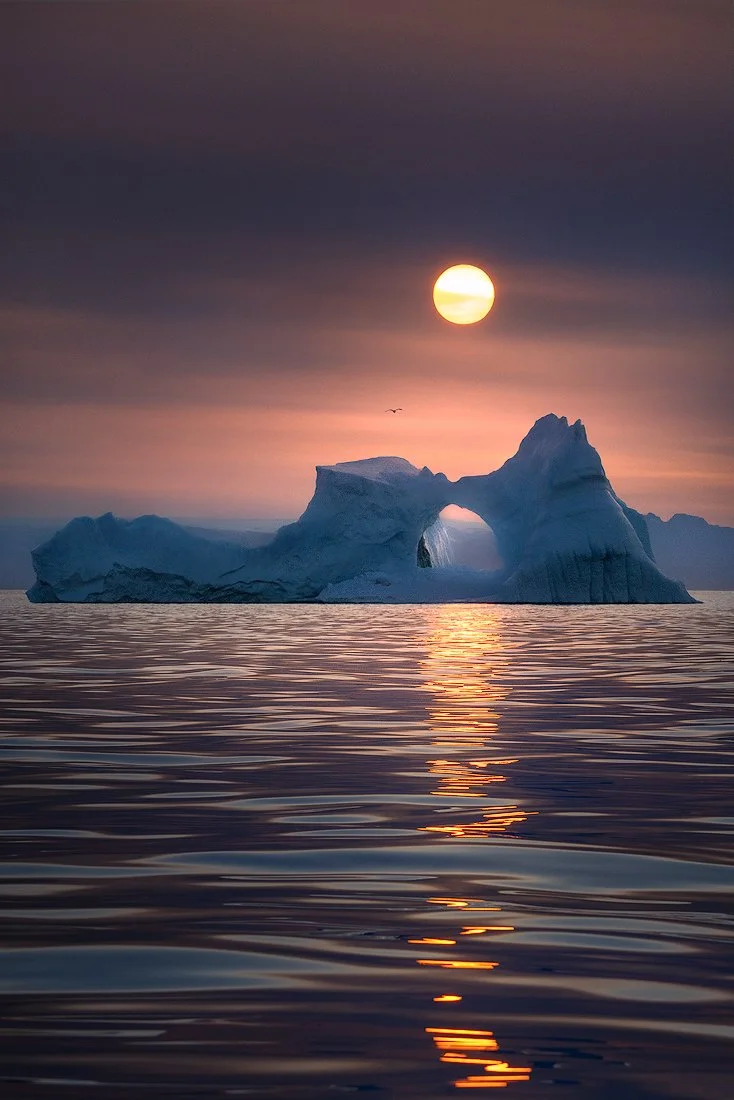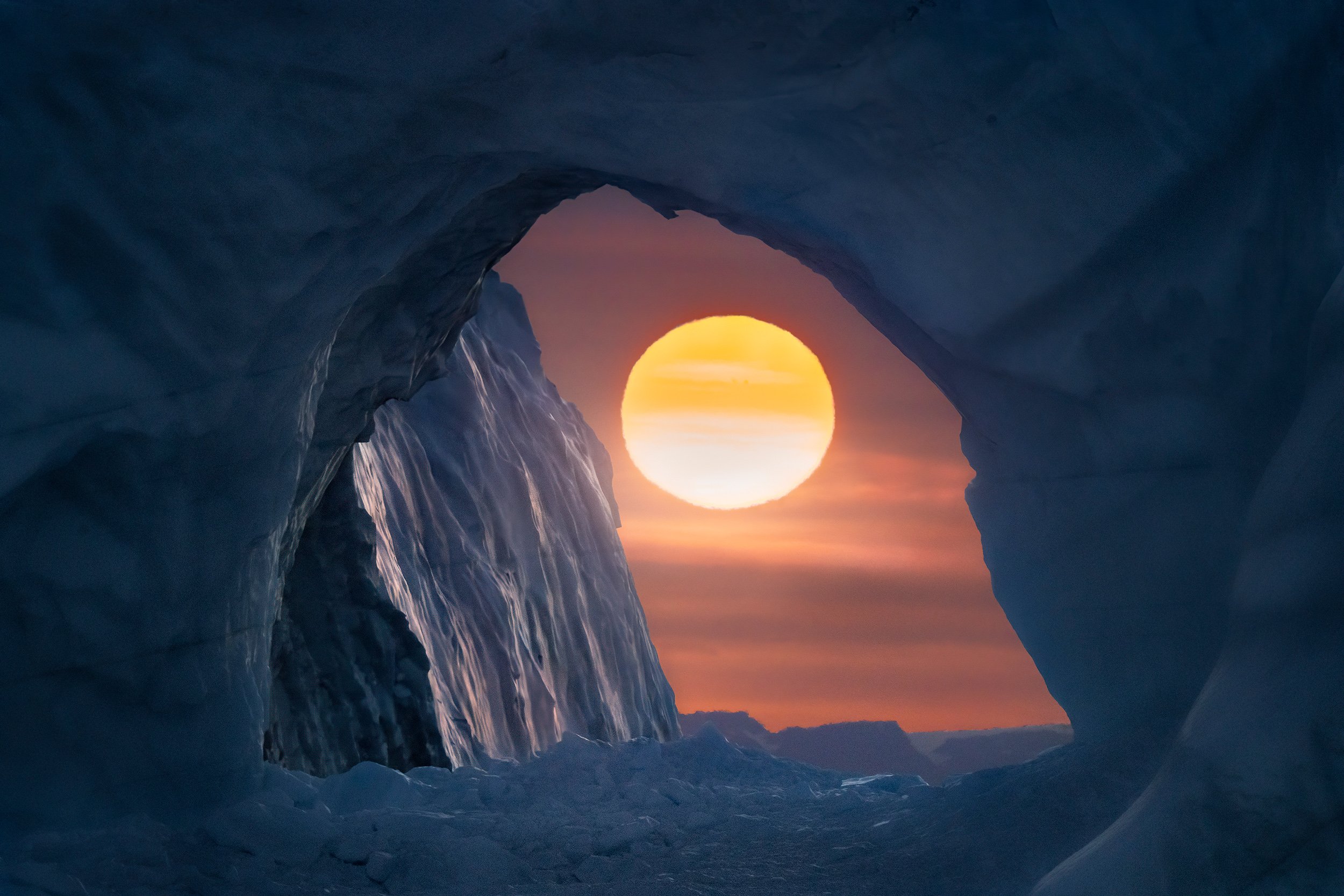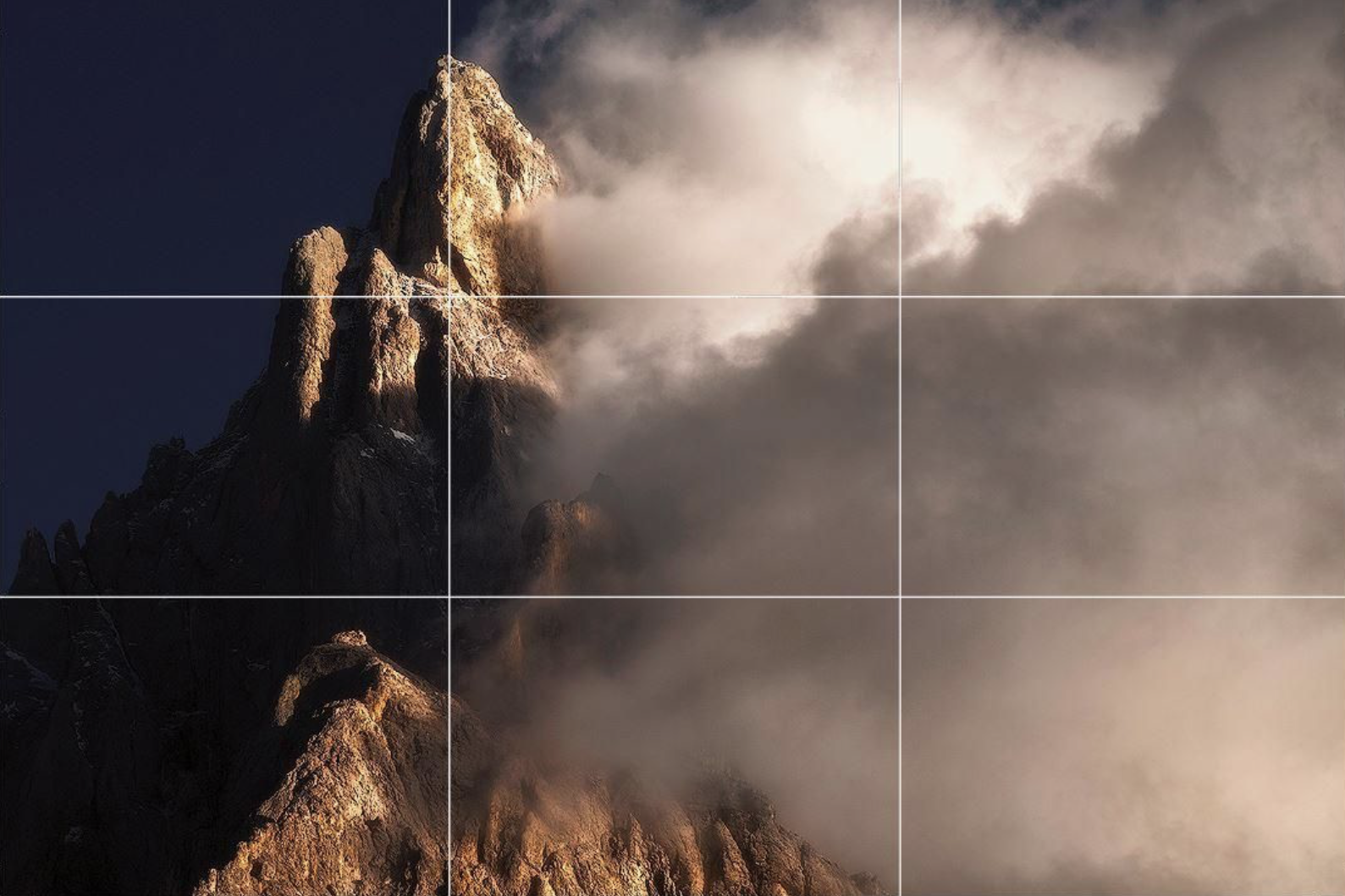Composition techniques in landscape photography
The photo composition techniques are decisive for the success of a landscape image. In a social media world, where so many photographers are showing their contents every day, it’s really important to be unique to inspire!
The photo composition techniques are basically ways to be unique and not only!
Various scientific studies show that the human eye is particularly drawn to images in which a certain combination of elements in specific positions.
In this blog post I’ll tell you the most important rules and some ideas for your landscape photography composition.
Photo composition techniques
1. THE MAIN SUBJECT
Don’t get lost in looking around without focusing on something specific! Choose a main subject for your landscape. It can be a mountain range, a tree, a volcano… even a big element in the sky as the Moon, especially if you’re in a plain.
2. LEAD THE VIEW IN THE PHOTO COMPOSITION
When you’ve found your main subject, look for something leading to that. The eyes need to be guided to the subject as the ears need to listen to a melody. We have to find something in the foreground that creates a perspective to the main subject.
One of the most widely used rules in landscape photography is the one of the leading lines. A shape, movement or natural elements creating lines lead to the main subject.
The reason why I like to use the leading lines in my photo composition is because they create a strong perspective.
Often in architecture photography you can perceive a lot of the perspective in a building or in a skyline. Well, in landscape photography the concept is the same, but we use nature to express our points of view.
3. HOW TO FIND THE LEADING LINES
You can find guide lines in all seasons and in all weather conditions. Use them for your picture composition! Flowers (as they are naturally arranged), roots, ice and tracks in the snow are just a few examples.
My tip for your creativity is to experiment a lot. When you’re in a spot, go around, try to take some pictures, explore the secrets of the location, even if it looks boring.
I really love this part of the shooting phase because in every season, in every year there is something different in the foreground.
“Roots of the Eternity” was taken in a very well known place I was planning to visit for some years before the time of this shot in 2019. Grindjisee is one of the lakes near Zermatt where there are some trees reflecting in the water.
Before going there I thought that there were not so many composition choices, just trees reflecting, grass next to the shore and similar subjects in the foreground.
But when I was there I went around the spot and I found those roots with that amazing shape! I was so proud about it.
That’s just an example, there are several places where I found inspiring elements on the foreground creating a unique view of the main subject in this picture is the one and the only Matterhorn.
4. FRAMES
A landscape surrounded by a cave or by branches brings a new perspective on the main element. The frames in nature help to focus much better on the main subject and they are very attractive. I think this photo composition technique helps to overcome the problem of a clear sky that can be boring.
“Dance of the trees” was taken near the Namib desert. It’s a double exposure and focus stacking.
In that area of Namibia the absence of clouds can be challenging in the daytime. So I had to find a solution.
Luckily there are huge trees with branches looking like the arms of a gyant! Without the tree in the foreground this picture would be really boring.
So, don’t get discouraged by the weather conditions! With a cool composition you’ll get a crazy shot anyway.
5. WHERE’S THE HORIZON?
In most of the situations it’s really important to choose where the horizon should be in our pictures.
That’s because of one main reason: which part is important in our image?
If there is a wonderful sky and a not so attractive foreground, the horizon is very low in the photo.
Examples of this situation are the storm photos. Indeed, in these conditions, there is an impressive sky and usually the storm chasing areas are in large plains with few elements like trees.
In most of the pictures in my gallery you should have noticed the horizon is often high, that’s because I like to focus on rich foregrounds.
But in my opinion, this technique is not a must and there can be exceptions to that. The most important thing to make your picture attractive is that it is impactful.
So, the most important thing is to strongly lead the view to your main subject.
6. SYMMETRIES IN A PHOTO COMPOSITION
The human brain is very attracted to symmetry, which is created, for example, by elements such as reflections in water. In this case, the horizon line is often positioned in the center of the image.
7. COMPOSING WITH THE TELE LENS
When we take photos with the telephoto lens, we don’t have leading lines and we do not have the same possibilities as for a wide-angle lens. But we can work with layers that are arranged one behind the other to create depth.
With the telephoto, distant objects can appear very big in your picture, which makes a completely new view of details in the landscape.
8. LONE ELEMENTS
You can create very interesting photo compositions of a “lone” element.
The lone element can be a summit over a “sea of clouds”, a person looking at a kind of landscape which is basically quite abstract (fog and clouds), a tree in the mist and similar small elements.
This kind of photo composition technique can give a sense of the greatness of nature in comparison with a small element. Usually this photo composition is done with the tele lens.
9. INTIMATE LANDSCAPE PHOTOGRAPHY
Basically, intimate landscapes are details of bigger scenes in nature. Some examples are patterns of leaves, small elements in the background of a natural scenery, details of a slope, of a glacier.
Also some kinds of aerial shots are considered intimate landscapes, for instance details of a valley, rivers that look like veins from above.
Usually the photo composition techniques to create these shots are to capture a kind of pattern made of repeating elements.
10. HOW DO I USE THE RULE OF THIRDS
The rule of thirds is one of the most important photo composition techniques.
If you divide your image into 9 equal-sized sections with two horizontal and two vertical lines, you’ll get areas calledthirds.
According to scientific studies, if you place the subject on the intersections of these thirds, the human eye will be more attracted to the subject.
Some cameras can display this grid inside the camera. In post-processing, you can find this grid when transforming or cutting in Lightroom and Adobe Photoshop.
Usually I like to use the rule of thirds when I have a small element with a monotonous background or two elements, one small and one very big.
But my favorite photo composition technique is the central subject with leading lines on the foreground, stronger and more impactful in my opinion.












